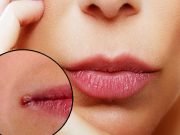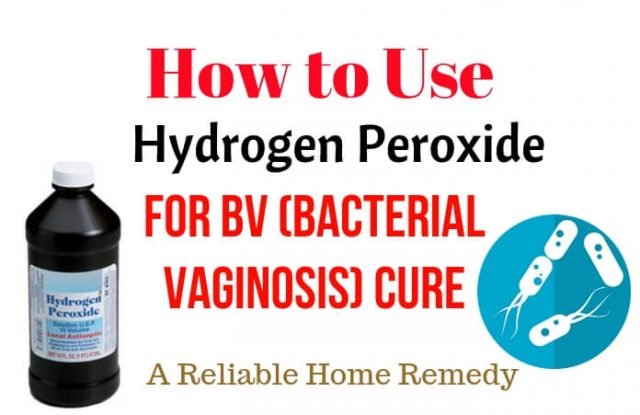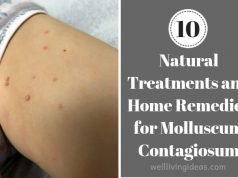For a condition that affects approximately 29% of women belonging to the child-bearing age range in the United States, bacterial vaginosis is rarely ever talked about. Although considered to be a bacterial infection, it is actually an excess of the bacteria that typically and harmlessly resides in a developed human vagina. Thankfully, the condition is easily treatable and can be cared for at home with hydrogen peroxide that is available at any drug store.
What is bacterial vaginosis?
A typical human vagina is usually quite damp, which by a rule of thumb means that it will be home to a variety of microorganisms, including bacteria. Much like curd, the vagina too consists of both good and bad bacteria, and they co-exist happily as long as a certain ratio is maintained between the two. Vaginosis occurs when the bad bacteria become the dominant kind. The condition is not certified as an STI, although unprotected sex or inadequate sexual hygiene are major contributors to the cause. It is most commonly found in women who still menstruate, that is somewhere between ages 15 and 45.
How do I know if I have vaginosis?
Getting checked out by a certified physician is always a smarter option than self-diagnosis. However, that being said, there are certain symptoms that almost always hint at the occurrence of vaginosis. For starters, if your vagina starts emitting a nasty odor and a discharge, whose color and consistency are not as per usual, it is a wise decision to make an appointment with your gynecologist at the earliest. The discharge, in this case, would be more yellowish or greenish and may even contain traces of blood. A prolonged burning sensation in your reproductive parts or a general discomfort in the region might also indicate acute vaginosis.
Bacterial vaginosis causes, and is it fatal?
Unfortunately, researchers and doctors have not been able to zero in on a concrete set of causes that set the condition off. However, a common factor in most cases observed is the insertion of a foreign object into the vagina, whether it’s IUDs or douching or unclean body parts during intercourse. Maintaining proper reproductive hygiene and ensuring that your sexual partner follows the same is, thus, integral to not contracting vaginosis. Although vaginosis, as a distinct medical condition, is not harmful, it may prove troublesome if you are pregnant or trying to conceive. It also increases your chances of contracting STIs.
Timely treatment is paramount
A number of options exist to cure bacterial vaginosis, including antibiotics, medicated soaps and washes, and homemade solutions. However, the treatment has to be administered in time and should be followed through without exemption. Otherwise, the condition might reappear. Recurrence of bacterial vaginosis over a relatively short period of time can give rise to Pelvic Inflammatory Disease that would make it nearly impossible for you to undergo childbirth. You also become prone to diseases like gonorrhea and chlamydia. Moreover, if you are pregnant, vaginosis might result in premature labor, putting you and your baby at risk.
Vaginosis vs. STIs
As mentioned, vaginosis is not considered an STD or an STI. It is also much easier to treat in comparison with STIs, most of which are generally considered incurable and medication available only makes the symptoms disappear. Treatment options for the two vary so self-diagnosis and self-medication are strongly advised against. The symptoms and the treatment option listed here are simply for your knowledge and to help you decide whether or not it is time to visit the doctor. Incorrect medication and treatment options and their erroneous administration can cause the body to go into shock. If this happens, your best bet is that you will never be able to have children. Worst case scenario, you might go into a coma. Do not treat bacterial vaginosis like a common STI and get yourself checked out by a doctor before exploring alternative medicine.
How do I treat vaginosis?
Usually, your physician will prescribe a course of antibiotics because it is the fastest known method to get rid of BV. Some might even recommend certain steroidal options, however, these usually come with side effects so choose wisely. Let’s come to hydrogen peroxide, which is touted as the safest remedy for treating bacterial vaginosis as well as a host of other vaginal infections.
Studies show that it successfully treated 59% of test-study patients and relieved them of symptoms within the third month, as compared to conventional options of medication. Once this stage has been successfully reached, keeping the area clean and dry and using medicated washes to maintain the pH balance of the vagina should suffice for a complete recovery. However, proper aftercare is equally important to make sure that the condition does not resurface yet again.
Why is hydrogen peroxide effective for bacterial vaginosis?
All this talk of diseases and infections; it’s probably skipped your mind that good bacteria called lactobacillus also exist in your vagina. Although the losing side during vaginosis, the key to beating the condition lies in increasing the lactobacillus count in your vagina. This is where hydrogen peroxide comes in handy because the substance promotes the growth of the bacteria. It also helps accelerate the rate of lactic acid production which helps stabilize the normal pH levels in your primary sex organs. Together, the whole ecosystem works hand-in-hand to quickly eliminate the overgrowth of bad bacteria and restore normalcy in your vagina. Most pharma-companies today use hydrogen peroxide for yeast infection medication.
Let’s take a look at how you can administer the hydrogen peroxide to treat bacterial vaginosis:
Douching it in
The practice of douching, although not normally advised by doctors, can actually be the most efficient method to treat the condition. This is because it will proactively push the solution into your birth canal and allow it to remain there for a relatively long period of time. Mix hydrogen peroxide with water at a 1:1 ratio. Alternatively, you can even get over-the-counter hydrogen peroxide solution from your local drug store. Place it in a douche and administer it slowly lest the solution spill out. Remember, the vagina is a self-cleaning organ so make it a point not to exceed more than once a day when douching.
The hydrogen peroxide tampon trick
For some women, the administration of hydrogen peroxide directly into the vagina by means of douching does more harm than good because it disrupts the normal pH balance of the vagina, especially if you have sensitive skin. It may cause rashes and peeling. Dipping a tampon into the hydrogen peroxide solution and leaving it inside you for no more than 30 minutes is recommended as a safer alternative. The cotton from which the tampon has been made soaks up the excess solution, which means that your vaginal walls are not being exposed to a harsh concentration anymore. It goes without saying that the tampon to be used should be absolutely clean and free from dust debris.
Clean your private parts with medicated washes and soaps
The normal pH balance of the vagina, although varying with age and other factors such as stress, should always be slightly acidic. This is because the human sperm is alkaline in nature and, thus, the two combined provide a neutral venue, ideal for the fertilization of the egg and the growth of the zygote. Most medicated vaginal washes and soaps comprise hydrogen peroxide as one of its active ingredients and are quite effective in helping restore the normal acidic state of your vagina. This is the method that most women prefer as other options can get quite messy and sticky, leading to an uncomfortable sensation throughout the day. This, on the other hand, leaves you feeling clean and infection-free.
Ointments are the way to go
Thanks to modern medicine, bacterial infection cure for the vagina now comes in ointment form, that is simple to apply and hassle-free when it comes to the preparation. Over-the-counter ointments or gels containing hydrogen peroxide as one of its listed primary ingredients are just as effective in treating vaginosis as your more popular method of douching the solution in. Most of these are completely safe to be applied internally, however, it is recommended that you follow the instructions as mentioned on the packaging. If symptoms continue to persist or aggravate, do not hesitate to call the doctor.
A prolonged steep can be relaxing
If the vaginosis has made your private regions feel itchy and flaky, a hydrogen peroxide steep can help promote a soothing sensation, while at the same time encouraging the growth of lactobacillus. Mix hydrogen peroxide solution with lukewarm water. The water should be pre-heated before the hydrogen peroxide is added to it. A clean cotton cloth or a sanitary napkin is to be immersed in the mixture. Dab the cloth in and around your vagina, allowing the solution to get absorbed into it. Repeating this method every night before bed can yield quick and visible results. Make sure that you wash your private parts before the steep.
Alternative solutions
Now that you know how to use hydrogen peroxide for BV treatment, you might want to look into other solutions that you can make at home. For starters, nature’s very own omnipotent elixir, tea tree oil can help yield excellent results. The oil needs to be mixed with a carrier oil like coconut or almond oil in a 1:2 ratios. Test the mixture on a small patch of skin first before administering it directly into your private parts.
Boric acid capsules have long been hailed as the toughest disinfectant around. These can be purchased in capsule form from your local chemist. Administering the treatment every night for two weeks should do the trick. If you would like a more natural solution, garlic pills have also been hailed for their remarkable healing and antibacterial properties.
Other ways to help the healing
Keep the following checklist in mind to accelerate the healing of your vagina as well as for maintaining a good reproductive hygiene:
- Do not wear underwear unless absolutely necessary. If you must, make sure that the underwear is clean and is made from a breathable material.
- While washing your underwear, take a look at the ingredients from which the detergent has been made. Often times, the harsh chemicals from the detergent cause your skin to become irritated.
- Wash your private parts gently with clean water or a medicated wash every day.
- Try to avoid any unnatural dampness in the area.
- Always make sure that you and your partner are absolutely clean before having sex. After intercourse, always wash thoroughly.
Concluding remarks
The patient should shrug all inhibitions away as soon as she suspects a case of vaginosis. The sooner the treatment commences, the better for if allowed to persist for a prolonged period, this seemingly harmless infection can become severe. It is always a good idea to visit the gynecologist before beginning to administer the remedy on your own. Irrespective of the treatment option that you decide on, always stick to the routine and administer it as per the given instructions. If you are on a course of antibiotics, do not stop taking the medication once the symptoms have cleared. Diseases such as these are often latent to the naked eye.

































